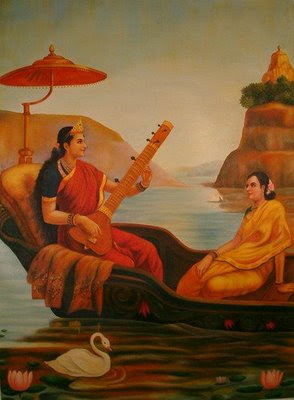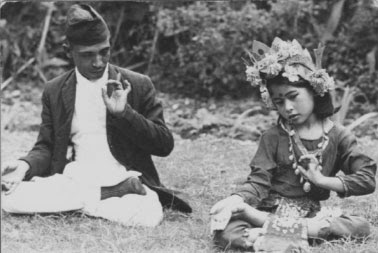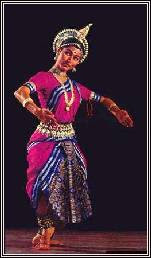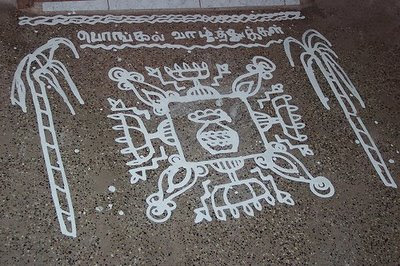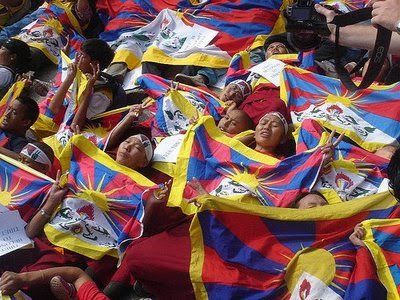Dancing down the dakinis KathmanduPeople get excited (or maybe they are just being polite) when I tell them I am learning
sacred Buddhist dance of the Newars. The actual classes are pretty mundane. It's like piano practice - not so much fun to watch.
Raju and I go up to the 7th floor rooftop terrace where the solar panels and newly-potted plants are kept. Invariably, so

meone has been partying up there so we have to sweep the concrete terrace of dust and cigarette butts. I wear black exercise pants and a black t-shirt. Raju wears street clothes (jeans and sweatshirts). The winter sun glares down on us, but in current temperatures (highs 64F) is welcome. In three months' time, we will be hiding from it.
On a relatively clear day, we can actually see snowcapped Himalayan mountains. Unfortunately, most days are hazey (even in winter) with pollution and we see only the green rolling hills of the valley.
From the 7th storey,
Swayambhunath Temple on its legendary hill is clearly visible. So we turn toward Swayambhu's spires and recite the
Padmanrtyeshwor prayer. I still haven't got this part down. In this part of the world, as in India, classes allow no time for warm-up exercises; you are expected to have already done that on your own.
If Raju has had time to stop by the ancient Patan Buddhist HQ, the
Golden Temple (Kwa Bahal), he brings a pair of
"tinchu" or ritual cymbals.
The strict sacred geometry of Kalakshetra-style Bharatanatyam is still (despite four or so years of running from it) in my muscles, brain and veins. It's kind of like having learned Hindi first, then trying to learn Nepali and constantly comparing Nepali to Hindi mentally.
In Charya, I'm supposed to emulate the watery, transitory Buddha nature of "anitya"  (impermanence) as epitomised by the placid Buddha faces of local statues. Instead I keep overextended my legs and doing rigid mudras (hand gestures).
(impermanence) as epitomised by the placid Buddha faces of local statues. Instead I keep overextended my legs and doing rigid mudras (hand gestures).
Everything in Charya is more rounded and feminine ("lasya"). And after six years of keeping my hips in a straight line centered over my feet, now I must shift them endlessly back and forth like waves of the ocean. My teacher, who is male, looks a great deal more feminine and gentle than I while dancing.
For now we are both content with the idea that "you're still memorizing the steps," but I will have to transition into more gracefully flowing movements.
There is a place for "tandava" (thunderous) movement in Charya -especially when depicting wrathful figures such as the Vajrayogini. Above is a photo of Lianne T. Hunt dancing the role. The Vajrayogini is a sort of queen of
the Dakinis. Last week I learnt four of her postures, all of which involve imbibing 'blo

od' from a 'skull-cup' and a lunging stance called
"pratyalida." Most wrathful deities are always pictured in such a stance. These stances and postures can be seen dozens of times a day all over Kathmandu, in the windows of countless Thangka and statue shoppes.
Long before I came to Nepal or India, the Vajrayogini was in my life (found her in some book and the image really stayed with me). I have always felt the concept of Dakinis to be strangely familiar, and now am trying to learn more. Evidently everyone belongs to
one of the "five families" of Dakinis which each relate to a particular klesha, or affliction. If you read
this web page you will know about as much as I do. I have narrowed it down a bit, though- I am definitely not
Padma. (Not enough interest in worldly things, for one.)
The drawing of Ratna Dakini is by Phyllis Glanville.

